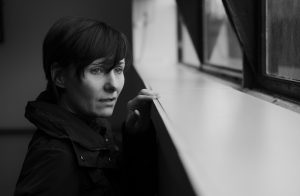 With last week’s winter solstice, the earth’s northern latitudes are getting more sunlight every day – even if only by minutes. And yet for those who live in the northern hemisphere, the sun sets before many people leave work for the day. And the winter season makes it more difficult to get outside.
With last week’s winter solstice, the earth’s northern latitudes are getting more sunlight every day – even if only by minutes. And yet for those who live in the northern hemisphere, the sun sets before many people leave work for the day. And the winter season makes it more difficult to get outside.
It’s no surprise that there’s substantive evidence that this dark and cold season affects the moods and mental health of millions of people. Seasonal Affective Disorder — sometimes referred to as the winter blues — is a well-founded medical condition. Data show that approximately 5 percent of people have seasonal depression and up to 20 percent have more mild winter blues.
The treatment options for seasonal depression include the same therapies as any other type of depression: prescription medications and therapy. But there is another option as well: light therapy. The treatment involves sitting in front of a light that mimics sunlight each day. But does it work?
It turns out that it’s difficult to collect high-quality data about light therapy because researchers have not found a foolproof way to create a placebo to sitting in front of a bright light each day.
But there are two large systematic reviews that concur in finding that light therapy can help alleviate seasonal depression: one published in 2007 in the Annals of Clinical Psychology and another published in 2005 in the American Journal of Psychiatry. Both found that for people with seasonal depression, exposure to bright light treatment early in the morning can be as effective as antidepressant therapy.
Since then, there is little new information about light therapy. A review last year by the Cochrane Collaboration found little evidence that light therapy is effective in preventing seasonal depression. (The researchers only found one randomized-controlled study that met their criteria.)
And other recent Cochrane review found that antidepressants are an effective treatment for some patients with seasonal depression, but also carry the risk of headaches, nausea and insomnia.
All this means that the take-home message on seasonal depression is not completely clear. There is moderate-quality evidence that light therapy is an effective treatment, and it carries little risk. And there is also some evidence that antidepressants may work. As always, if you or someone you know is struggling with depression, working with a doctor to find a solution that’s right for you is the best course of action.



Speak Your Mind